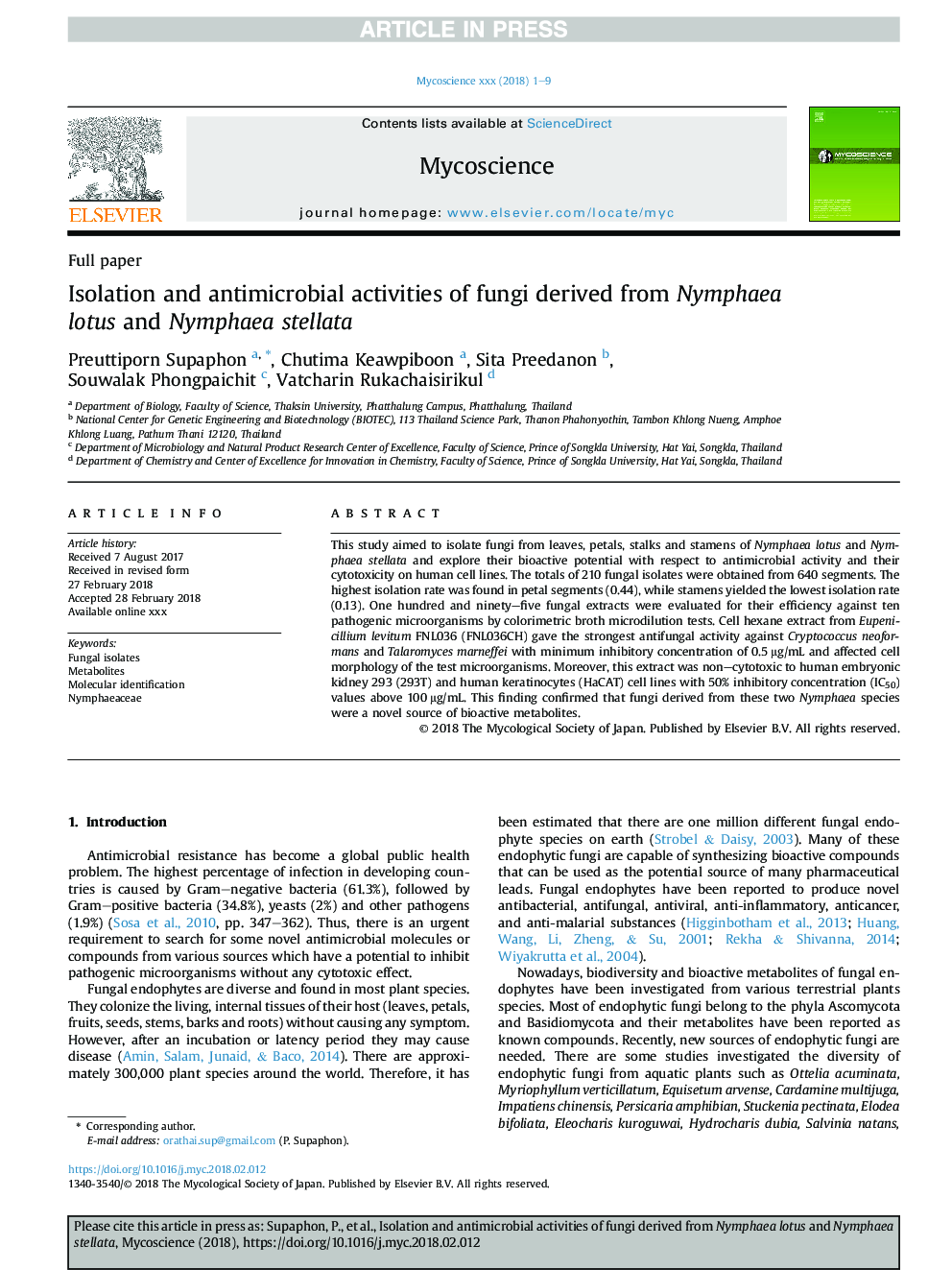| کد مقاله | کد نشریه | سال انتشار | مقاله انگلیسی | نسخه تمام متن |
|---|---|---|---|---|
| 8943804 | 1645207 | 2018 | 9 صفحه PDF | دانلود رایگان |
عنوان انگلیسی مقاله ISI
Isolation and antimicrobial activities of fungi derived from Nymphaea lotus and Nymphaea stellata
دانلود مقاله + سفارش ترجمه
دانلود مقاله ISI انگلیسی
رایگان برای ایرانیان
کلمات کلیدی
موضوعات مرتبط
علوم زیستی و بیوفناوری
علوم کشاورزی و بیولوژیک
علوم کشاورزی و بیولوژیک (عمومی)
پیش نمایش صفحه اول مقاله

چکیده انگلیسی
This study aimed to isolate fungi from leaves, petals, stalks and stamens of Nymphaea lotus and Nymphaea stellata and explore their bioactive potential with respect to antimicrobial activity and their cytotoxicity on human cell lines. The totals of 210 fungal isolates were obtained from 640 segments. The highest isolation rate was found in petal segments (0.44), while stamens yielded the lowest isolation rate (0.13). One hundred and ninety-five fungal extracts were evaluated for their efficiency against ten pathogenic microorganisms by colorimetric broth microdilution tests. Cell hexane extract from Eupenicillium levitum FNL036 (FNL036CH) gave the strongest antifungal activity against Cryptococcus neoformans and Talaromyces marneffei with minimum inhibitory concentration of 0.5â¯Î¼g/mL and affected cell morphology of the test microorganisms. Moreover, this extract was non-cytotoxic to human embryonic kidney 293 (293T) and human keratinocytes (HaCAT) cell lines with 50% inhibitory concentration (IC50) values above 100â¯Î¼g/mL. This finding confirmed that fungi derived from these two Nymphaea species were a novel source of bioactive metabolites.
ناشر
Database: Elsevier - ScienceDirect (ساینس دایرکت)
Journal: Mycoscience - Volume 59, Issue 5, September 2018, Pages 415-423
Journal: Mycoscience - Volume 59, Issue 5, September 2018, Pages 415-423
نویسندگان
Preuttiporn Supaphon, Chutima Keawpiboon, Sita Preedanon, Souwalak Phongpaichit, Vatcharin Rukachaisirikul,